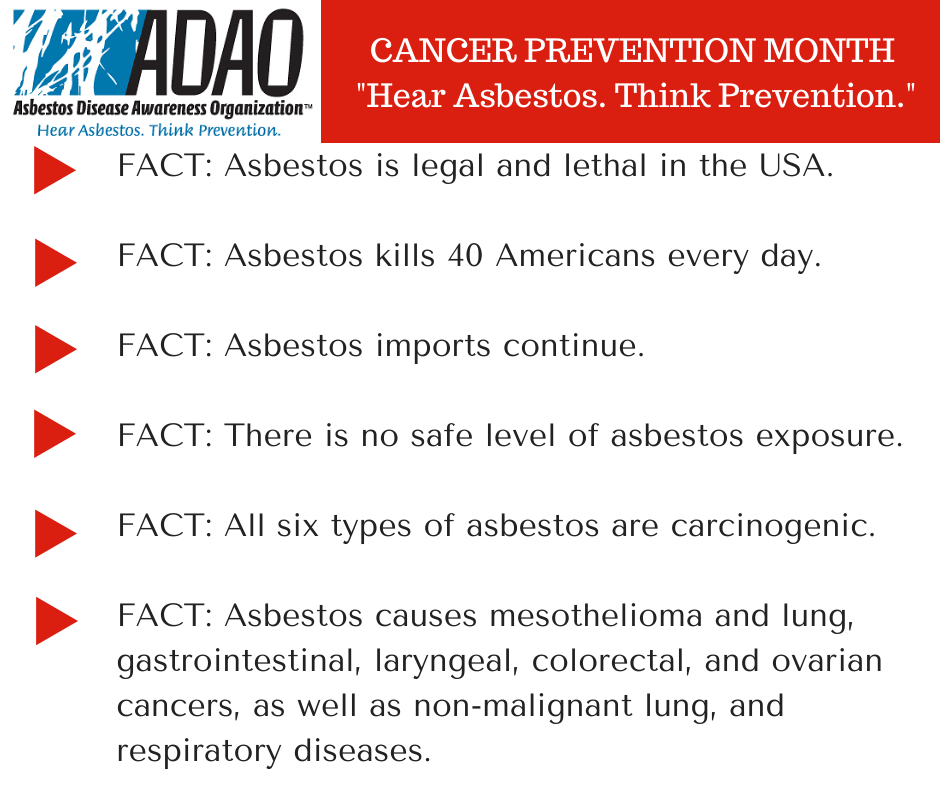Posted on January 24, 2023
Over 50 years ago, former President Richard Nixon signed the National Cancer Act. The Act, signed in 1971, expanded funding for cancer research and programs, and also established a network of cancer centers. This year, we are dedicated to knowledge, because knowledge is power. The more people who know about the danger of asbestos exposure, the less people will be exposed. Thanks to the work of researchers and healthcare professionals across the nation, there is more information and awareness available about cancer than ever before. National Cancer Prevention month is a great opportunity to join the online conversation about cancer prevention by using the hashtags #PreventAsbestosCancer and #WorldCancerDay.
According to the Cancer Journal for Clinicians, from 2015 to 2019, cancer death rates decreased 2.3% per year (on average) for men and 1.9% per year (on average) for women. Last year’s Annual Report to the Nation on the Status of Cancer (October 27, 2022) reported that, “cancer death rates continued to decline overall, for children, and for adolescents and young adults, and treatment advances have led to accelerated declines in death rates for several sites, such as lung and melanoma. The increases in incidence rates for several common cancers in part reflect changes in risk factors, screening test use, and diagnostic practice.”
In 2023, 1,958,310 new cancer cases and 609,820 cancer deaths are projected to occur in the United States. The number does not need to be this high. There are now prevention methods that could be utilized to hopefully lessen these numbers. Physicians not only need to have more conversations with their patients to talk about early warning symptoms of cancer, but also about how to prevent high risk exposures. People can be exposed to asbestos through consumer goods (asbestos has been found in children’s toys and makeup products), occupational hazards, and in the environment. They can also be exposed through home repairs or during a natural disaster. If physicians and medical personnel had these conversations more frequently with their patients, people might be able to decrease risk in patient exposure to asbestos.
This report underscores the importance of preventative action in the fight against cancer, as prevention remains the only cure for asbestos-related lung cancer, mesothelioma, and other asbestos-caused diseases. Unfortunately, despite a century’s worth of scientific data condemning it as carcinogenic, asbestos remains legal and lethal in the U.S. Each person we lose to asbestos leaves behind a legacy of loss and devastated loved ones.
Through education, advocacy, and community building, ADAO has worked diligently to raise awareness about the dangers of asbestos exposure. Together with stakeholders, we took landmark steps with the Alan Reinstein Ban Asbestos Now Act (ARBAN) to end imports & use, study legacy asbestos, and improve chemical reporting. We hope to see ARBAN move forward in 2023 and finally become a law.
We are excited to tune into Less Cancer’s National Cancer Prevention Workshop on February 2nd which will bring together the nation’s brightest scientific and political minds in the movement to prevent cancer. If you’d like to participate more directly, you can join online for the streaming workshop.
Stay tuned for educational updates throughout this critical month of advocacy!
Together, we can end asbestos-caused cancers.
Linda
